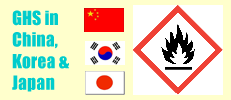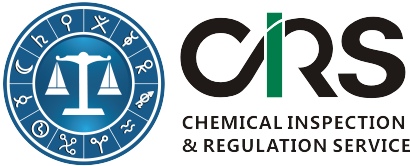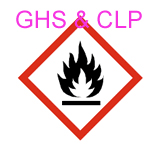
Labelling and Packaging under CLP
CLP stands for the Regulation (EC) No 1272/2008 on the Classification, Labeling and Packaging of substances and mixtures. Therefore, one should classify, label and package substances and mixtures according to CLP before placing them on the market;
EU manufacturer, importer, downstream user or distributor shall label any chemical substance or mixture which is classified as hazardous and is contained in packaging. Many EU manufacturers and importers need to prepare new labels in accordance with CLP regulation. The label should be firmly affixed to one or more surfaces of the packaging containing the substance or mixture. Non-EU companies might also be required to provide such CLP compliant labels.
CLP introduces the United Nations globally harmonized system (UN GHS) for classification and labeling of chemicals into Europe. Thus CLP compliant labels are identical to GHS labels in EU and also apply to countries that have implemented GHS (though slight difference exists).
NEW!
14 Dec 2012, CIRS to hold a free webinar about GHS labelling for small containers & awkward packaging. For more information, please click here.
The Elements of CLP Compliant Label (GHS Label)
The CLP label should be firmly affixed to one or more surfaces of the packaging immediately containing your substance or mixture. They should be legible horizontally when the package is set down normally.
A CLP compliant label shall contain the following elements (See our sample CLP label illustration here):
- the name, address and telephone number of the supplier/s of the substance or mixture;
- the nominal quantity of the substance or mixture in the packages ;
- product identifiers;
- hazard pictograms;
- signal word;
- hazard statements;
- appropriate precautionary statements; and
- supplemental information.
Hazard pictograms
A hazard pictogram is a pictorial presentation of a particular hazard. Accordingly, the classification of your substance or mixture determines the hazard pictograms that should be displayed on your label, for example:

Note: Hazard pictograms should be in the shape of a square set at a point (diamond shape), and should have a black symbol on a white background with a red border. Each hazard pictogram should cover at least one fifteenth of the surface area of the harmonised label, but the minimum area shall not be less than 1 square centimeters.
Signal words
A signal word indicates to the reader if a hazard is generally more severe or less severe. The label should include the relevant signal word in accordance with the classification of the hazardous substance or mixture. In case your substance or mixture displays a more severe hazard, the label should bear the signal word ‘danger’, and in case of less severe hazards, it should bear the signal word ‘warning’.
Hazard statements
Your labels should also bear the relevant hazard statements describing the nature and severity of the hazards of your substance or mixture.
Hazard statement codes |
Hazard class |
For example |
H2** |
physical hazards |
H252: Self-heating in large quantities; may catch fire |
H3** |
health hazards |
H362: May cause harm to breast-fed children |
H4** |
environmental hazards |
H410: Very toxic to aquatic life with long lasting effects. |
Precautionary statements
Your labels should bear the relevant precautionary statements, giving advice on measures to prevent or minimize adverse effects to human health or the environment arising from the hazards of your substance or mixture. Furthermore, the precautionary statements of one language should be grouped together with the hazard statements on the label.
Precautionary statement codes |
Precautionary measurement |
For example |
P1** |
General |
P102: Keep out of reach of children |
P2** |
Prevention |
P210: Keep away from heat/sparks/open flames/ hot surfaces. |
P3** |
Response |
P311: Call a poison center or doctor/physician |
P4** |
Storage |
P403: Store in a well-ventilated place |
Note: There should be no more than six p-statements on a clp label.
Supplemental information
Your label should include the relevant supplemental information when the substance or mixture that has been classified as hazardous has the physical or health properties described in Annex II under CLP regulation. Please note that hazard statements carried through from DSD and DPD, but not yet included in the GHS are codified as “EUH”.
Supplemental information codes |
For example |
EUH001 |
Explosive when dry |
EUH006 |
Explosive when dry |
EUH014 |
Reacts violently with water |
Mixtures will always have to be self-classified. They have to be assessed to elucidate whether they meet the criteria for classification. For this assessment any available harmonized classifications of the substances contained in the mixture must be taken into account.
The requirements of label size
The requirement of the size of a label is listed as below:
Capacity of the package |
Dimensions of label /millimetres |
≤ 3 litres |
If possible at least 52 x 74 |
> 3 litres but ≤ 50 litres |
At least 74 x 105 |
> 50 litres but ≤ 500 litres |
At least 105 x 148 |
> 500 litres |
At least 148 x 210 |
Consumer Products Labelling in Europe
CLP regulation also applies to chemical products for consumer use. Example of those consumer products include detergents, paints, fuel additives, lubricants, air freshners, adhesives, aerosol products, and pesticides for households, etc. All above products need to be labelled according to CLP after 2015 if they are mixtures. However, companies may take a proactive approach and label their preparation according to CLP now.
A good label for chemical consumer products should include at least two parts: GHS elements and non-GHS elements.
GHS elements refer to:
- Product name;
- Ingredients' info (may be claimed as confidential);
- Correct GHS classification;
- Signal word;
- Hazard pictogram;
- Hazard statements in standard phrases(not just translations);
- Precautionary statements in standard phrases;
- Manufacturer or distributor's Info;
- 24 emergency telephone number;
- Correct color;
- Correct size;
Non-GHS elements include
- Company logo;
- Product name;
- Volume or net weight;
- Product description;
- Directions for use;
- Country of origin;
- Batch code;
- Storage condtions;
- Manufacturing date;
- Shelf-life;
- Other elements required by specific product standards(for example, aersol products).
How can we assist you in complying with CLP?
We provide end-to-end solutions to CLP compliance. We can help you classify your substances and mixtures according to CLP, notify the classification and labeling of your products to the C&L Inventory, prepare CLP compliant labels and the latest Safety Data Sheets.
Even though there are many guidance documents on how to prepare CLP compliant label, it is much easier and less time-consuming for you to outsource this job to us.
- Regulatory advice on the implications of CLP and REACH for your company;
- Re-classification and re-labeling of your substances or mixtures;
- Preparation of CLP compliant labels;
- Consumer products labelling review and preparation;
- Notification to the Classification & Labeling Inventory (C&L notification);
- New Safety Data Sheets in accordance with CLP & REACH;
About CIRS
CIRS a leading provider of comprehensive chemical compliance services for companies doing businesses in/with EU and China with a strong focus on chemical compliance.
With a strong presence in EU and China, CIRS has provided cost-effective regulatory support to over 3,000 companies while doing businesses in both the EU and China.
CIRS is the largest REACH only representative in the world. Since 2007, we have:
- pre-registered over 10,000 substances;
- acted as only representative for over 2,400 non-EU companies;
- served clients in more than 25 countries;
- registered over 145 substances to date;
- prepared over 1000 REACH SDS and CLP labels to date;
- submitted over 500 C&L Notifications to date;
CIRS is a recommended service provider by China Inspection and Quarantine Bureau, the US Mission to the EU and IDA. CIRS is also a member of Helsinki REACH Centre.
Contact
CIRS also offer CLP compliance package price (notification+SDS+label) from 300 Euros per substance. We also prepare Chinese MSDS and label in accordance with China GHS.
- Europe Office
Unit 1 Ardee Business Park, Hale Street, Ardee, Co. Louth, Ireland
Tel : +353 41 9806 916 | Fax : +353 41 9806 999
Email: service@cirs-reach.com
Hote Downloads
- CLP Labelling Service Brochure[pdf,326KB]
- Sample CLP Compliant Label for Maleic Anhydride [pdf,177KB]
- Presentation: Understanding Cut-off Value and Concentration Limits in CLP Regulation and China GHS
- ECHA Guidance on CLP Regulation[pdf,332KB]
- Guidance on the Application of the CLP Criteria [pdf,432KB]
- Application Form for C&L Notification, Label and SDS[doc,131KB]
- Practical CLP Compliance Advice for EU Importers[pdf]





